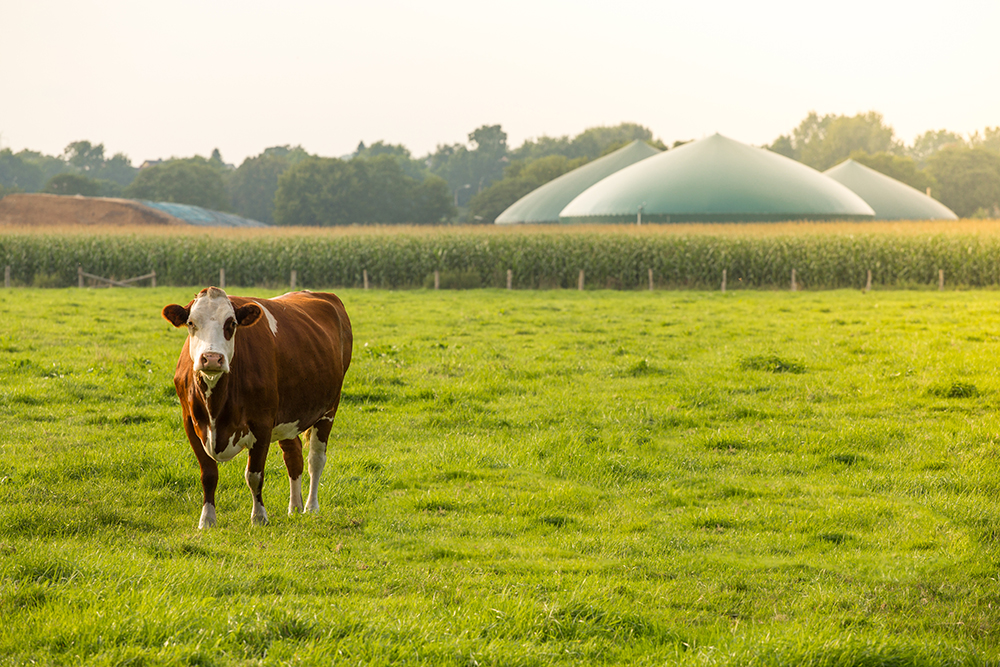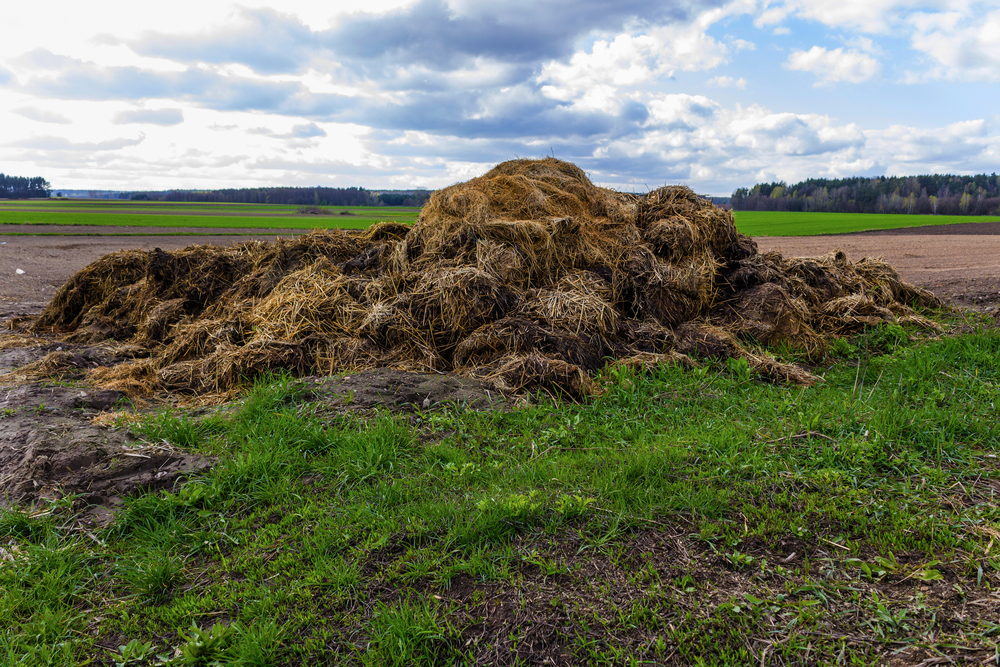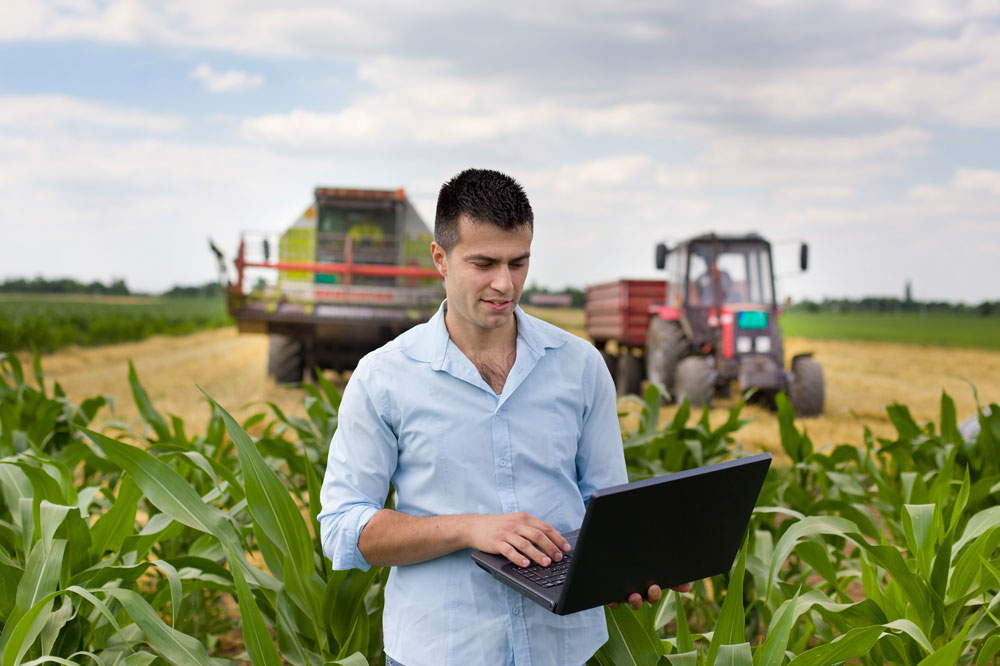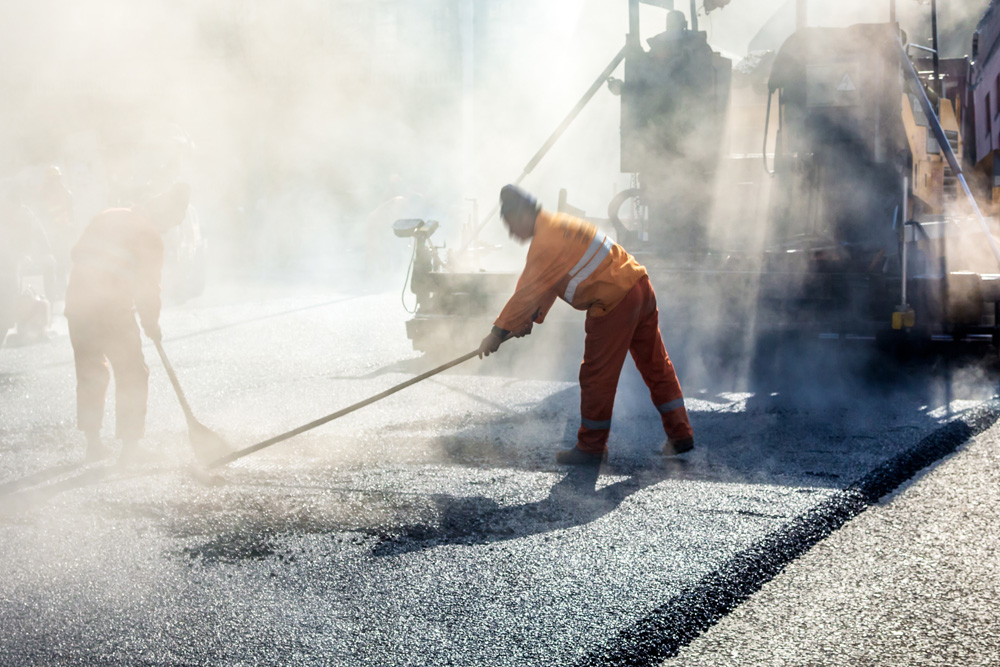
Longread
Regional collaboration: investing in a circular economy
The Netherlands is at the start of a transition towards a circular economy. That’s why Wageningen researchers are looking for opportunities and solutions, do’s and don’ts. For example, Wageningen University & Research is the coordinator of a large European project in which nutrients like phosphate and nitrogen are recycled from manure, as an important step towards closing cycles.
An overload of phosphate and nitrogen pollutes ground and surface water and causes environmental damage. However, as nutrients these are at the same time essential to soil fertility and plant growth. The intensive cattle breeding practices in the Netherlands imply import of nutrients and the overload of manure.
Cows and pigs together produce around 20% more phosphate than we can use in the Netherlands for agriculture. That is why a lot of phosphate-rich manure is exported from the Netherlands to areas in Germany and Poland where soils, on the contrary, are short in phosphate.
“We do want to prevent wasteful dung transports. By extracting phosphate from the manure, we are able to keep organic matter and nitrogen in the region. What's more, as the situation is now, we would be in the middle of a manure problem straight away, when a country would close its borders in case of a veterinary disease", says Oscar Schoumans, senior researcher at Wageningen Environmental Research.
Circular economy at a regional level
“We should try and utilise the manure as much as possible ourselves, preferably within the region,” according to Schoumans. In order to achieve this, Wageningen Research has developed a unique method for extracting phosphate from manure. Schoumans and his colleagues started the first laboratory trials in 2013. A couple of successful pilot projects later a large European project called SYSTEMIC, of which Schoumans is the coordinator, is in action. This project funds part of the costs of building installations beside large-scale biogas plants, allowing nutrients to be recovered. Queen Máxima performed the inauguration of the first Groene Mineralen Centrale (Green Minerals Plant) in the east of the Netherlands (Achterhoek) on 4 September 2019.
SYSTEMIC is the only large-scale demonstration project in Europe on the topic of circular economy and organic residue, like bio-waste, manure and sludge from sewage treatment plants. The new installations yield an optimal reuse of nutrients in their own area, states Schoumans. “We fine-tune the technology towards the region. What are the prevailing problems? And which products do the crops grown there need? It is not a mere copy-paste. A common denominator however, is to recycle, which involves bringing back nutrients to the farm fields.”
New products
In the Green Minerals Plant of the Achterhoek, the manure - mainly pig manure - will firstly be fermented, giving way to bio-gas that flows through a pipeline into the nearby factory of FrieslandCampina. The remaining fermented manure will subsequently be separated into mineral fertilisers and organic matter low in minerals. The recovered liquid nitrogen and potassium mineral fertilisers contain low levels of phosphate and are well-suited to be used on Dutch arable land.
The recovered phosphorus will be upgraded into phosphate fertiliser, that can be made fit for use on low phosphate soils abroad. Then, it will represent only 10 percent of the volume of exported manure that is shipped from the Netherlands today. “This mineral phosphate can also be used in chemical fertilisers”, says Inge Regelink, who is researching sustainable soil use, just like her colleague Oscar Schoumans. Phosphorus as in artificial fertiliser is for the most part derived from mines in Morocco and China. “Europe does not have any phosphate mines. By using the phosphate material also as a chemical fertiliser, we can become less dependent of the phosphate mines outside Europe, ” Regelink adds.
Finally, an organic fibre remains that resembles potting soil and might be a good alternative for peat, according to Regelink. “There is value being created from a waste flow, when such a new product is developed.”

Circular solutions for biowaste - the Green Minerals Plant
This way of closing the mineral cycles offers an excellent example of the kind of circular agriculture the Netherlands is striving for, Oscar Schoumans says. “This naturally calls for entrepreneurship. Investments are needed, as it concerns new technology that involves risks”, Schoumans mentions. ”We now focus on manure, because at the moment this is a real bottleneck. We will be looking into other phosphate-rich flows, like from sewage sludge.” Regelink adds.
Pioneers and followers
Researchers monitor and evaluate within SYSTEMIC the solutions that fermentation companies see for recovering minerals. They are also investigating options near other bio-gas installations in Europe. Furthermore they look into the quality of the products, into bottlenecks from law and regulations and claims of sustainability. This will lead to a complete picture of the environmental advantages and possible risks. “We will judge for example whether the leaching of nitrogen could be increasing”, explains Regelink. “There is much be considered. One could be making very clean products, but at the same time be consuming a lot of energy. Then it would not represent a really sustainable solution,” she concludes.
In about two years, the researchers want to show European policymakers and companies all that is possible and feasible. “We have five demonstration plants, and around thirty interested companies surrounding these. Hopefully they will follow. There will always be a few pioneers, but their first followers are just as valuable,” Schoumans says.

The circular ladder
The Green Mineral Plant is a model example of complete reuse of mineral raw materials. Reuse, however, is not on top of the circular ladder. The highest level of that ladder is the avoidance of unnecessary production. Then follows the arrangement of sustainable production processes in the best possible way, making use of green raw materials that are easy to be processed and recyclable. The next best step is upgrading waste and to use this as a resource, according to Wim de Haas, who is researching the governance of circular economy at Wageningen Environmental Research.
“Circularity is about closing the cycles at the lowest possible level and organising production processes in such a manner that no hazardous substances will crop up. And the main question is on what scale you will be doing this: on the neighbourhood level, the municipality, the region, the province, nation-wide, Europe, globally?” De Haas points also to the fact that the most circular solution may not necessarily be the most sustainable solution. “Circularity in itself is not an aim, but a means to reach an end, which is sustainability.”
Tacking obstacles
With his colleague Remco Kranendonk, Wim de Haas has written the book Circulaire gebiedsontwikkeling. “Whether an area is larger or smaller, foremostly it is important that various local companies are able to get involved”, says De Haas. He gives the example of a project in the region Arnhem-Nijmegen, with three industrial parks that are looking for ways to use waste flows adequately. Companies and researchers are exploring which waste flows have the best chances, like for example reprocessing plastic waste into outdoor furniture.
The parties immediately encounter practical problems. De Haas: “The processing would be much easier, if companies each would procure the same kind of plastic. Another example is the packaging material and polystyrene, that can be properly processed technologically. Polystyrene, however, has to be pressed first in a special machine. When more companies would share the use of one such a machine, the company where it is standing would formally become a waste processor and should have to comply with all sorts of regulations. “This really is obstructive legislation. It is low-hanging fruit, to process polystyrene together, and yet this is impossible. When the returns are so evident, we really have to sort this out”, notes De Haas.
Obstructive laws and regulations
“Whenever we realise sustainable regional development in the Netherlands, it will be despite and not thanks to the legal framework”, Fred Kistenkas states, Associate Professor and juridical researcher at WUR, specialised in administrative law, spatial planning and environmental legislation. The current sectoral legislation and regulations obstruct the circular economy in many instances. “The Dutch manure law only regulates the manure per hectare, for example. It is a very complicated story in legal terms, but this law is not regulating any reuse of phosphate nor any circularity.” Kistenkas explains. Besides the manure law, sectoral assessments appear to be obstacles. Plans for a "food forest" can be blocked because of the traditional nature conservation law. Or climate goals and carbon sequestration may conflict with existing nature targets. For example, forests are being cut down because the legal habitat test requires that there must be at least as many hectares of sand drift or heathland, while these are actually less sustainable.

The new Omgevingswet or Environmental Law combines the existing laws in the area of nature, environment and land use, but substantively things have been left unchanged. A missed opportunity, Kistenkas thinks: “Both the European and international environmental law as well as the legislation on raw materials are linear instead of circular. The Netherlands could have been progressive with the new Omgevingswet, but in reality it appears to be more of the same. Kistenkas, together with economists and other lawyers, is indicating the loopholes in law and regulations on behalf of the Dutch Ministry of LNV. This project, Circular Economy Law Innovations will also give an overview of how other countries regulated this matter, while indicating what the Netherlands can do to have sustainability and circularity legally rooted. Kistenkas: “The law should be changed, or a hardship clause placed on top of the existing legislation. Sustainability and circular regional development could then become the highest legal principle of the Omgevingswet that can overrule, if needed, for example water or nature regulations.”
Resistance
Of a different kind, is the resistance that fermentation and manure processing plants encounter locally. “People are worried about the bad smell, nuisance caused by the transport and environmental pollution. Besides, some people view manure processing as supporting the system of intensive agriculture”, De Haas says. The societal aspects are complicated, at times. “It is important that senior officials have a decent talk with people, that they are open in their communication and give information and not avoid talks. Also a perspective from the social sciences is needed, in order to map out the obstacles and solutions well, finds De Haas. “Research becomes possible by using this perspective, on why processes won't make progress and which propositions for improvement are viable.”
New business models
The Netherlands are at the beginning of a transition to the circular economy. In 2018, companies, societal and governmental organisations drafted five agendas for ‘the Accord on Raw Materials for the Netherlands to be completely circular in 2050’ on the areas of biomass and food, plastic materials, manufacturing, building and consumer goods. “The government however, does not state clear objectives. While the goals of the energy transition are very clear, the ones relating to the circular transition still have to be drawn up,” says De Haas.
“Circular economy is particularly the result of collaboration between companies, governments and citizens that have never been used to collaborate as segments of society before. A large variety of revenue models has to be designed in which sustainability becomes an integral part of the returns”, says Marian Stuiver, programme leader Metropolitan Solutions at Wageningen Environmental Research.

Companies are beginning to consider other business models. Some companies are not buying certain products and services any more, but are renting these and they outsource from specialised companies, which makes processing easier. Stuiver: “The Dutch Central Government Real Estate Agency intends to purchase mere circular within a number of years. The government wants to set a good example and to develop the road to go. This is an enormous challenge to which we from Wageningen can actively contribute.”
Regional innovation
“It is still rather in the pilot phase. A lot of investments and efforts are still needed”, admits also Remco Kranendonk, researcher Regional Development and Policy at Wageningen Environmental Research. “Developing innovative processes for a new chain may take at least five to seven years.” The region is the proper scale level on which one can organise collaboration and bring parties together, Kranendonk emphasises.
Europe is taking the lead in the regional innovation policy, among others with the EU programme Research and Innovation Strategies for Smart Specialisation (RIS3). The core aim is to use the potential of raw materials and biomass as well as possible, and to connect the agro-sector with industries on themes like food and bio-plastics. Kranendonk explains that, in order to be eligible for European regional funding, government agencies, companies and knowledge institutes have to work together and make strategic choices. “Governments and companies will jointly determine what their focus is, based on the features and qualities of that region. Attention is given, at the same time, to develop solutions for specific questions the region is facing.”
Economic opportunities
Twelve years ago, the French government started a policy for northern France, directed towards regional specialisation and cluster formation. “The collaboration between the agrarian sector and the chemical industry was to be stimulated in northern France which led to the development of the biobased economy. The government, knowledge institutes and companies supported the innovation process intensively: from idea via exploratory research to investments and business cases. This has been fruitful: the circular economy has matured,” says Kranendonk. Now the Dutch province of Gelderland works together with the northern French region on topics like lignin, green proteins and sustainable textiles. “Innovations of this kind offer new opportunities for the region to distinguish itself economically and otherwise, and when it comes to employment,” Kranendonk emphasises.

Soil improver and building material
The Netherlands provides ample opportunities for regional and circular collaboration. In Gelderland, the Green Mineral Plant is a good example. Tests are taking place on residual products from miscanthus grasses and hemp. Kranendonk: “The fibres are already being processed in the paper and textile industry, but the residual product lignin, seen as waste, can be of use in asphalt, or as a soil improver.” Marian Stuiver: “Another good example from which we can learn and in which we are intensively collaborating with partners in soil circularity and circular economy, is the Green Circles-projects.”
Also in the Gelderland Food Valley, in the northern Dutch Dairy Campus, the Dutch horticultural sector and the arable farming in Flevoland opportunities can be found. From eggplant waste, building and isolation material can be made, while tomato stems provide fibres for tomato packaging material, Kranendonk illustrates. Furthermore there are some biomass circular platforms, but that is still a bit premature. Stuiver: “In addition, we will keep innovating and encouraging, like our colleague Jeroen Sluijsmans who is developing expertise on the role of reed mace in producing circular building materials.”
Evolutionary and pluralistic
And in twenty years? Ideally we will see each product returning in the chain as early as possible, Wim de Haas replies. “For the shorter term, I hope that companies and all sorts of groups will start enthusiastically to work on circularity, and that the government will facilitate this and will connect the various groups. Wageningen can assist in designing the technological innovations and other solutions, as I see this as an evolutionary process. We should be multifaceted in this, while working side by side on different solutions at the same time. So for example by carrying out a study an optimal processing of manure, as well as by striving for innovative farming systems.”
Circularity in agriculture, building and fashion will be much more common within two decades, Marian Stuiver, programme leader Green Cities, joins in. “New technology, like Artificial Intelligence and 3D printing, will be important in this.” But before that will be the case, heaps of work will have to be done first, she emphasises. “Companies really need us during the transition to a circular economy, to support them with knowledge and facilities, but also to show them the multiple ways that are leading to a circular economy.”
Contributors:
Read more about circular economy and closing nutrient cycles
Research at Wageningen University & Research
- Green Cities programme: Circular city
- Wageningen University & Research theme 'Circular & Biobased Economy'
- Dossier Circular agrofood system
- Dossier Phosphate
- Dossier Manure
News and articles
- 'Mineral plant makes useful products out of manure', Resource 20 sep 2019
- Fertiliser as valuable raw material in the circular economy
- Healthy soil is essential for a biobased & circular economy